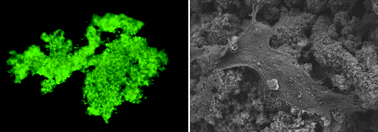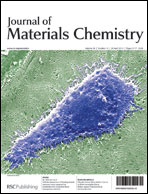Nanomaterials hold great promise in various biomedical applications such as biosensing, vaccination, and drug delivery. However, previous studies have raised an important caveat that common nanomaterials are toxic to many mammalian cells, which is generally owing to the cellular uptake of nanoparticles or debris. This concern has substantially hampered the development of nanomaterial-mediated cell delivery. In this work, we demonstrated a hydrogel/functionalised-nanoaggregate composite that can support survival and spreading of human mesenchymal stem cells in three-dimensional matrices, and prevented the potential toxicity of nanoparticles by harnessing the unique encapsulation of hydrogel scaffolds. Therefore, for the first time, we designed an injectable, nanomaterial-based platform for therapeutic cell delivery, and believe this work may contribute to the various communities of biology, chemistry and physics, especially to the specialists working in the diverse fields of nanomaterials science, tissue engineering, cell biology and toxicology.

You have access to this article
 Please wait while we load your content...
Something went wrong. Try again?
Please wait while we load your content...
Something went wrong. Try again?


 Please wait while we load your content...
Please wait while we load your content...